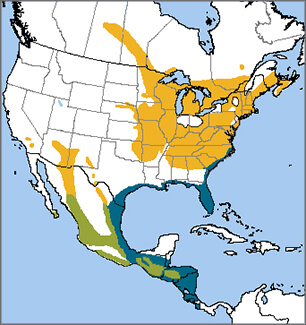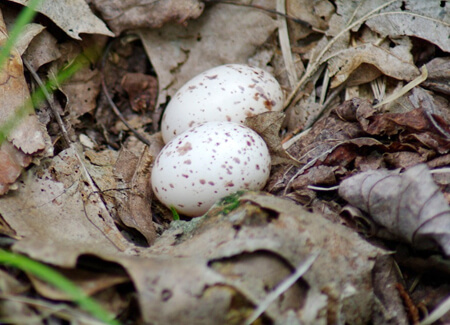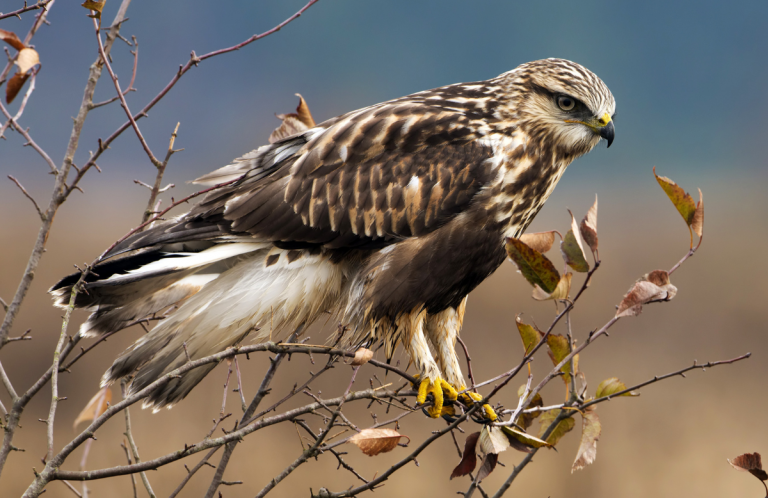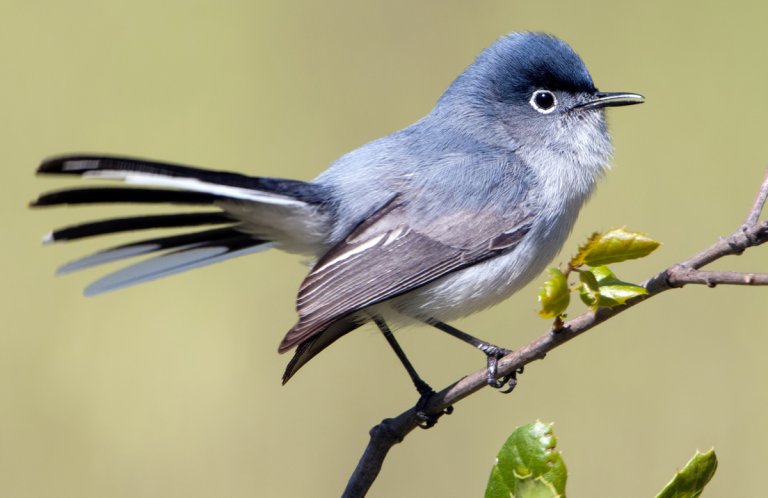 Like its close relative the Chuck-will's-widow, the Eastern Whip-poor-will is rarely seen due to its excellent camouflage. This member of the nightjar family is named for its haunting, onomatopoeic song, which has inspired folk legends and artists from Robert Frost to Elton John.
Like its close relative the Chuck-will's-widow, the Eastern Whip-poor-will is rarely seen due to its excellent camouflage. This member of the nightjar family is named for its haunting, onomatopoeic song, which has inspired folk legends and artists from Robert Frost to Elton John.
Unfortunately, the nightly chorus of “whips” is heard less and less often each spring as forests are lost to agriculture and development. Since Whip-poor-wills often forage close to roads, they are also vulnerable to collisions with cars. Declines in their prey from pollution and pesticide use have also affected this insect-eating bird.
Soul-snatcher
One New England legend says the Whip-poor-will can sense a person's soul departing, and capture it as it leaves. Native American lore considered the singing of these birds a death omen.
The only things whips actually capture are insects. They are consummate aerial foragers, consuming large quantities of beetles, moths, and other insects each night — a process that is aided by a large, wide mouth, or “gape.” Strictly nocturnal, the birds are most active at dawn and dusk and on bright, moonlit nights.
Sign up for ABC's eNews to learn how you can help protect birds
Eastern Whip-poor-wills nest on the ground in a scrape of dead leaves, usually laying two eggs at a time. They sit tight on the nest and will rarely flush unless almost stepped upon.

Eastern Whip-poor-will nest and eggs by Philina English
Interestingly, the hatching of Whip-poor-will chicks appears to be closely tied to the lunar cycle: Most hatch a few days before a full moon. This strategy may have evolved to allow the adult birds to forage all night during the full moon, enabling them to catch enough insects to support their chicks.
Recovery in Progress
Eastern Whip-poor-will populations have experienced steep declines, and the species was one of several added to the 2014 State of the Birds Watch List. ABC and partners are working to help address the decline of aerial insectivores like the Whip-poor-will and Purple Martin. Our Migratory Bird Program also aims to address the reasons for decline of this and many other birds throughout their life cycles.
ABC and the U.S. Fish and Wildlife Service, as partners of the Central Hardwoods Joint Venture, have contributed to an ongoing project in the Missouri Ozarks that is documenting habitat use by whips and Chuck-will's-widows in the Mark Twain National Forest. Led by Dr. Frank Thompson from USDA Forest Service Research, this project is part of an effort to assess the response of these and other Watch List species to the national forest's shortleaf pine and pine-oak woodland restoration efforts.
Donate to support ABC's conservation mission!



















































